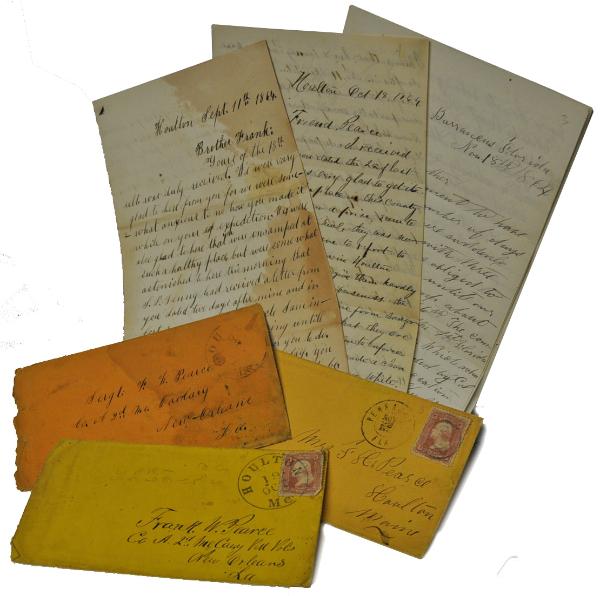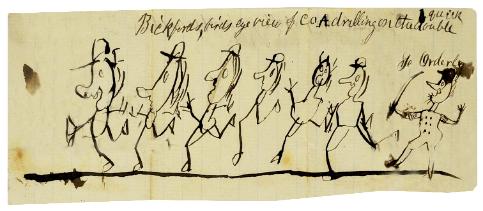


A bird’s eye view of Co. A Drilling on the double quick.
A Sept. 11,1864 letter to Sgt. Frank Pearce in New Orleans is from his brother Varney back in Houlton. He advises of the challenges on the Copperheads in local and state wide elections. Varney offers his delight that Union candidates have prevailed over the anti-war group. He asks to be remembered to Billie Read another Houlton boy (18 years of age) serving with the 2nd Cavalry. Tell Billie Read to shoot a Rebel for me if he gets a chance seeing as how I am too big a coward to shoot one for myself, writes brother Varney.
*Robert J. Grey: Houlton, Me.; 9th Me. Inf.; KIA 9/29/64; Chaffin’s Farm, Va.
**Addison P. Russell: Houlton, Me.; 1st Me. Cav.; wd. At Petersburg, Va.; died 10/2/64
***Joseph Ganes Sanders: Ala.; 31st Ga. Inf. CSA 10/5/61; Pvt., Sgt., Capt. 5/13/62; res.
1/28/64; comm. 2nd Lt. 1st Fl. Cavalry 8/25/64; res. 7/20/65 (died 2/19/67, Decatur County, Ga



Pearce’s inscribed
2nd Maine Cavalry
Regimental Association medal.

Corporal Ingersoll* as he appeared when being mustered in to U. S. Service.
(*Arthur J. Ingersoll, Co. A)
Frank Pearce’s Grand Army of the Republic medal sports the eagle suspension bar and blue ribbon of Post Commander. Pearce was an active member of the local Houlton, Maine, A. P. Russell G. A. R. Post 159. The Post was named in honor of Houlton native Adison P. Russell who enlisted in the 1st Maine Cavalry as Sgt. Major. Russell was promoted through the ranks to Captain before he was severely wounded at Petersburg, Virginia. Capt. Russell suffered amputation of his left leg lingering nearly four months before succumbing to his wounds.






